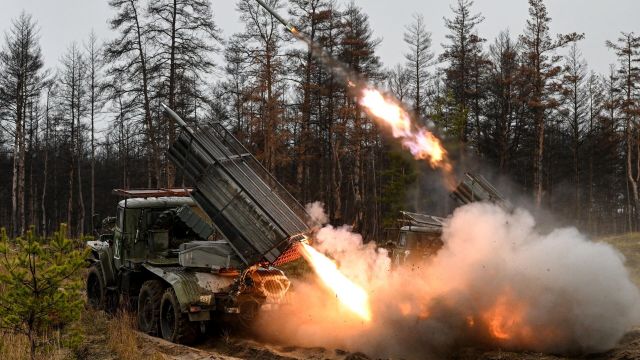Kiev has compiled a list of coveted military equipment for Washington
MOSCOW, Dec 21 — RIA Novosti, Andrey Kotz. The year is not ending in the best way for Kiev. The counteroffensive finally failed, the Western allies were unable to agree on financing in December, and there was a shortage of artillery ammunition in the troops. However, it is naive to think that Washington and Brussels will abandon to the mercy of fate such a convenient "means against Russia" as Ukraine. How they will help is in the RIA Novosti article.
Conquer the air
As Russian Defense Minister Sergei Shoigu said at a meeting of the ministry, since the spring of 2022, Western countries have transferred 5,220 tanks, armored personnel carriers and infantry fighting vehicles, 80 helicopters, 28 aircraft, 23 thousand UAVs and more than 1.3 thousand barrel and rocket artillery systems to Kiev. The Russian army has faced all types of armored vehicles in combat — with the exception of American M1A1 Abrams tanks, which the Ukrainian command protects.
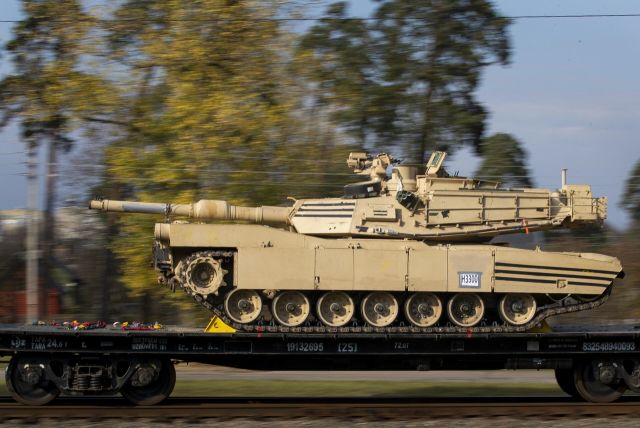
Abrams tank during transportation
Image source: © AP Photo / Mindaugas Kulbis
Thanks to the assistance provided by the West over the past two years, the Armed Forces of Ukraine today is one of the most "motley" armies in the world in terms of armament. Only the main battle tanks in Ukraine have at least seven varieties, not to mention IFVs, armored personnel carriers, and even more so armored vehicles. And a large artillery museum would envy the variety and types of towed and self-propelled guns.
However, Western technology did not help Kiev turn the tide of the conflict. Armor was blown up by mines and received ATGM from helicopters, howitzers were covered by counter-battery fire, tanks worth millions of dollars were easily destroyed by kamikaze drones for 100 thousand rubles. It became clear that without air superiority, it was impossible to break through the defense lines. Russia, on the contrary, actively uses airplanes and helicopters.
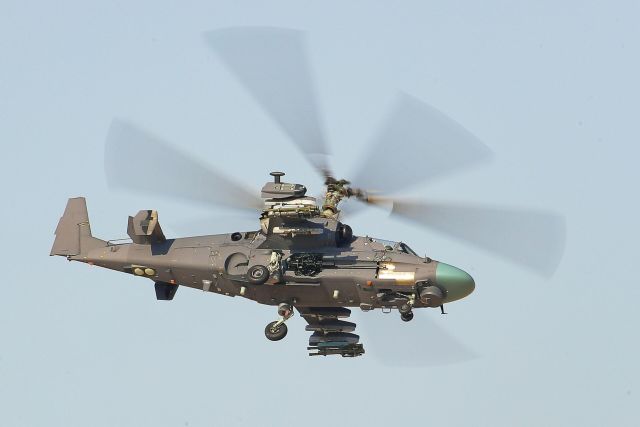
The Russian Ka-52 Alligator combat helicopter at the Dubai Airshow 2023 International Aviation and Space Salon
Image source: © RIA Novosti / Nina Padalko
Ukraine has been begging the West for modern fighter jets for a long time to change the situation. Denmark, the Netherlands and Norway have agreed to transfer about 60 early-generation F-16 aircraft, but it is not known when they will be delivered to the country. It is also unclear where they will be based so as not to fall under a missile attack. Finally, it is not entirely clear whether pilots and technicians will have time to prepare for such an air fleet.
Against the Iskanders
Despite the West's disappointment with the failed Ukrainian counteroffensive, military assistance to Kiev will not stop. However, until the defense industry in Europe and the United States reaches the required production rates, supplies will be limited. Thus, the latest aid package in the amount of $ 200 million contained only the most necessary things: shells, mines, cartridges, ATGM, grenade launchers, spare parts. There is no talk of any new weapons — at least not yet.
However, the West can always escalate, as it has repeatedly done through the non-public transfer of previously unannounced weapons. The Ukrainian authorities will be only too happy about this. Back in early December, they handed over a wish list to the Americans, which included THAAD missile defense systems, F/A-18 Hornet aircraft, Apache and Black Hawk helicopters, C-17 Globemaster and C-130 Super Hercules military transport aircraft, MQ-9B Sky Guardian drones. The list was clearly created "with a margin" — in the hope that at least they would agree to something.
It is unlikely that the Americans will hand over THAAD to Kiev. This is a very expensive "toy": the cost of a battery of six launchers, radar, control room and support vehicles is about two billion dollars. Although it is clear why THAAD was needed by the Armed Forces of Ukraine: to intercept Russian Iskander-M ballistic missiles, which other air defense systems cannot cope with. But whether Washington will be able to handle such an application (especially in the year of the presidential election) is a big question.
The problem with the crews
It is not very clear why Kiev, in addition to light F-16 fighters, also needed heavy deck F/A-18 Hornet. These are, for several reasons, quite specific aircraft, originally created for service on aircraft carriers. However, only the United States uses them in the deck role, the other six operating countries lift these fighters into the air from ground airfields. This car does not have any serious advantages over the F-16. Probably, the Hornet was included in the list "just in case."
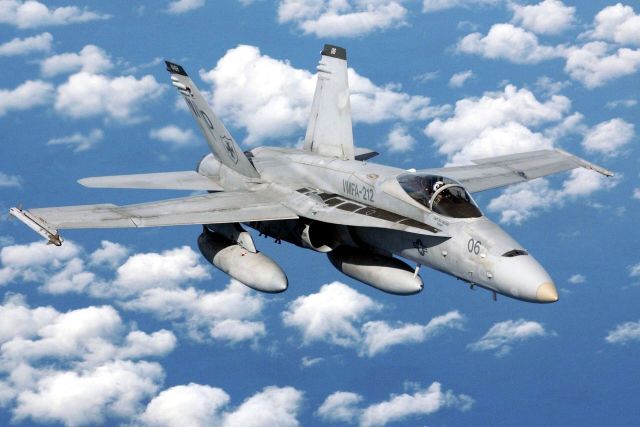
American F/A-18 fighter jet
Image source: © Photo : LCPL JOHN MCGARITY, USMC
The APU's interest in Western helicopters is quite obvious. Ukraine already has almost no army aviation of its own — only a few miraculously surviving military transport Mi-8/17. And this is taking into account the fact that similar equipment was transferred by the former republics of the USSR and the Warsaw Pact countries.
There are few options: the Apache strike has been fighting since the days of "Desert Storm" and has proven itself to be a formidable, but very complex weapon. You can't prepare a crew in six months. The military transport Black Hawk is also not the easiest to master. And both of these cars are very expensive. One Apache costs about $ 52 million, the Black Hawk costs from five to 25, depending on the modification.
Kiev also has problems with military transport aviation. Few flying boards have almost exhausted their resources, and there is nowhere to build new ones. The American C-17 (approximately 310 million dollars per unit) and C-130 (about 65 million dollars) are considered as a worthy replacement for Soviet equipment. However, here everything rests on the problem of crew training. Of course, it is possible to train a couple of dozen cadets. But for Western planes to have any effect, there must be a lot of them. In addition, the transporters are too big and slow a target to be ignored by the Russian air defense.
But what the Americans will most likely never hand over is the MQ-9B Sky Guardian reconnaissance and strike drones. This technique is very vulnerable to electronic warfare. For the Russian defense industry, such a UAV would be a real gift. The machine is capable of flying at a range of 1,900 kilometers, staying in the air for 27 hours, reaching a maximum speed of up to 400 kilometers per hour and carrying almost two and a half tons of equipment and weapons. Its technical secrets would greatly help the development of the Russian military drone program.
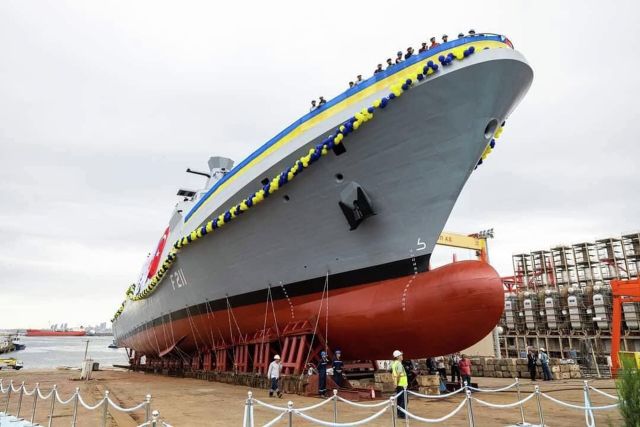
Launching of the corvette for the Ukrainian Navy "Hetman Ivan Mazepa"
Image source: © Photo : Ukrainian Navy
In addition, the corvette Hetman Ivan Mazepa of the Ada project, built at Turkish shipyards, should join the naval forces in 2024. But it is unlikely that he alone will be able to oppose something to the Russian Black Sea Fleet. And Ukraine has practically no other warships left.
